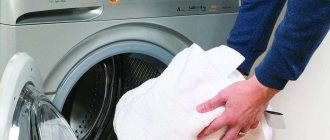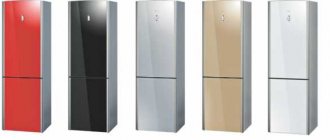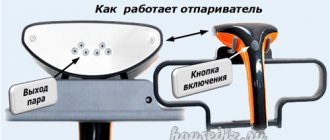Today the market is rich in various models of washing machines with an engine of this type. An inverter washing machine has a faster and more comfortable washing cycle; the noise level of machines of this type is low.
At the same time, the machines are not inferior in the efficiency of consumption of electricity, water and detergents during the washing process to washing machines equipped with traditional motors. You will learn about an inverter direct drive washing machine, what it is and how to choose an engine in this article. Here you will talk about such washing machines and how they work.
Inverter motor in a washing machine: what is it?
The main difference between such a motor and a conventional one is the principle of operation. In essence, this is the same electric motor, but it is controlled through an inverter or frequency converter. Inverter motors do not have carbon brushes, which makes them quieter and can provide higher speeds (up to 2000 rpm).
In addition, this technique is more economical, that is, it uses less energy and water. As a rule, due to the stability of speed and good balance, they are less susceptible to jumps and beats, which also cause a lot of inconvenience.
Are inverter motors reliable?
No brushes means no need to change them. And, as a rule, such models use direct drive, and there is no drive belt either. The simpler the design, the more reliable it is. Accordingly, inverter motors last longer than conventional ones (although they are more expensive) - usually 10-15 years without repair. But keep in mind: if repairs are still required, they will also cost more.
Is it worth buying an inverter washing machine then? The question remains open. In fact, this is a new stage in the development of washing machines, and if you are used to being at the forefront of progress, the purchase will be completely justified. But it’s also too early to write off ordinary cars: they are easier to repair and “reanimate” for further service. So the inverter motor of a washing machine has both pros and cons, like any other.
In terms of choice, models with an inverter are no different from conventional ones. The algorithm is quite simple.
Truth and speculation
Consumers are already accustomed to the fact that behind every beautiful word there can be a PR stunt that does not bring any practical benefit. But increasing the cost of versions with innovations is a natural thing. Should I pay for a new product or limit myself to a classic design? What is true and what is exaggeration:
- Energy efficiency, quietness and high-speed spinning are true. Really tested.
- Durability. This only applies to a motor without rubbing brushes. All other parts wear out in the same way as in conventional washing machines - a bearing, heating element or any other element may break.
It is reliably known that the words “affordable price” do not convey objectivity - the prices for new products are higher than for regular AGRs. In addition, the cost of repairing the motor itself is expensive, and spare parts for it are not cheap.
It is difficult to say unequivocally which type of motor is better - commutator or inverter, both options work successfully, both have a certain resource, after which they can fail. The average buyer is interested not so much in the operating principle of the engine as in the capabilities of the washing machine in which it is installed. The consumer focuses on them when choosing SMA.
Top or front loading
This is one of the main questions facing the buyer. What is the difference? Each download type has its pros and cons. Washing machines with a vertical loading type are more compact in size, so they can be placed in the bathroom or kitchen, where there is relatively little space.
Also, some housewives find it easier to load laundry into them, since they don’t have to bend over too much. Among other things, when opened, the lid does not take up useful space, since it opens upward. In vertical models, the drive is equipped with additional counterweights, so their vibration level is lower than that of front-facing cameras (if compared within the same brand).
However, in terms of the volume of loaded laundry, vertical ones are inferior to front ones - you can rarely find a model with a capacity of more than 7 kg. Also, before purchasing, it is worth checking whether there is a drum parking system, that is, the ability to stop after work with the lid up. For example, in old vertical machines the drum could stop at random, after which it had to be turned by hand. Modern cars usually have a drum parking. Among the vertical ones with an inverter motor, we would like to recommend the Gorenje WT 6213 with a 6 kg load capacity.
Front-loading models allow you to accommodate much more laundry, which will be a definite plus for a large family. Thus, front-facing machines can hold from 4 to 15 kg of laundry (then come industrial models).
The best front-loading inverter washing machines have a spin speed of 1400 - 1600 rpm. At this speed, the laundry turns out almost dry. And a huge number of programs will allow you to choose the right one for a specific type of laundry.
However, the advantages of front-facing vehicles affected their dimensions. They require much more space (although there are also compact models). Opening the lid will also require additional space. With equal loading and within the same brand, front-facing machines are slightly more expensive than vertical ones. One of the popular front-facing models with an inverter motor is LG F-1096TD3 . It will satisfy the needs of a large family as its capacity is 8 kg. At the same time, it has low energy consumption - 0.17 kWh/kg.
What should be the capacity of a washing machine?
This parameter largely depends on the size of the family: the larger it is, the more laundry needs to be washed. Also, the loading volume affects the size of the machine. If there is relatively little space in the bathroom, a model with a large loading volume simply cannot be installed. Please note that the loading parameter characterizes how much weight of dry laundry can be loaded at one time. It is worth remembering that some modes (for example, quick wash) imply incomplete filling of the drum. We have highlighted the average ratio of load weight to the number of people in the family:
- 1 - 2 people: 3 - 5 kg.
- 2 - 3 people: 4 - 6 kg.
- 4 - 6 people: 7 - 8 kg.
However, this does not mean that a 5 kg machine will not suit a family of 4 people. Anyway, colored and white laundry are usually washed separately, that is, you can just run several cycles. For large volumes or bulky items such as thick blankets, the Samsung WW80R42LHES with a laundry capacity of up to 8 kg is often used.
Peculiarities
In conventional motors, current enters the rotor through brushes. A magnetic field is formed in the rotor windings, which sets it in motion. In this case, the rotation speed is directly related to the voltage in the electrical network. The main difference between such a motor and a conventional one is that the first one does not have brushes.
An inverter is a device that converts alternating current into direct current. After which it is able to generate alternating current with the required frequency. Thanks to this, the inverter regulates the frequency and speed modes of the machine drum with high precision.
Do you need high revs?
We have already noted that inverter washing machines can operate at high spin speeds. As a rule, they are adjusted programmatically or manually. This is necessary because high speeds are contraindicated for some things. For example, in the Wool program they usually do not exceed 800 rpm.
When choosing a washing machine in relation to speed, you can proceed from the principle “more is not less.” You can spin cotton items at maximum, taking them out almost dry, and for more delicate items, reduce the speed to the recommended value.
The typical maximum for modern washing machines is 1400 rpm. For example, this Bosch WAT286H2OE .
Specifications
Inverter-type washing machines have the following characteristics:
- High spin speed.
- Low power consumption.
- Low water consumption.
- Low noise level.
- Possibility to select a washing program.
- Delay start.
- Automatic shutdown.
Which control is better?
There are three types of washing machine control:
- mechanical,
- electronic.
- sensory.
With mechanical everything is clear - this is the simplest option with physical knobs and buttons. If we talk about modern inverter machines, you will not find this in them.
Electronic control implies the presence of a display and menu. There are buttons here too, but there are fewer of them, and they serve mainly for menu navigation.
Touch control is no different from electronic control, except for the type of buttons. Here they are (you'll never guess) touch sensitive, making the control panel easier to keep clean.
Is it worth buying?
Who will be interested in the innovative machine:
- those who want to save electricity;
- lovers of silence in the house.
Of course, only the presence of a special engine cannot influence the choice; it is important to evaluate other characteristics: set of programs, tank material, functionality, etc. If you are looking for a budget option, you should not overpay for know-how.
Best inverter washing machines 2022
LG F-2H5HS6W
LG was the first to use an inverter motor in washing machines, so it can be considered the “founder” of the new technology. This model is designed for a total load of laundry of 7 kg. Maximum spin speed is 1200 rpm. There is a child lock system, meaning the control panel can be locked.
This washing machine is equipped not only with an inverter motor, but also with proprietary Smart Diagnosis technology. By connecting to the washing machine via a smartphone, you can adjust the washing modes, as well as read system operating errors. However, to connect you will need an NFC module in your smartphone. Among other things, the machine is equipped with a function to control the formation of foam, which improves the quality of washing.
Weissgauff WM 5649
This is one of the most energy-efficient washing machines with this load capacity. Its energy consumption class is A+++, which corresponds to approximately 0.14 kWh/kg. At one time, the washing machine can “take” up to 9 kg of laundry, which makes it popular for a family of 5 - 6 people. You can also wash large thick blankets in it. We also note that the maximum speed in the spin mode reaches 1400 rpm, so things will only be slightly damp.
The washing machine allows you not only to use fixed washing modes, but also to customize your own. That is, you can select one of the programs from the list (16 pieces) and further adjust it (for example, add a rinse or reduce the spin speed). These settings are saved in the device’s memory and can be launched with one click each time you wash. In one cycle, the device consumes 56 liters of water. With 9 kg of laundry this is a small expense. The heating element is made of stainless steel.
Samsung WW80R52LCFS
An inverter washing machine from Samsung allows you to simultaneously wash up to 8 kg of laundry. The manufacturer has equipped the device with the Eco Bubble bubble washing function. Thanks to it, air bubbles pass through the fabric, which allows you to better fight dirt. However, for this function to work, soft water is desirable, since bubbles will not form in hard water.
Among other things, there is a steam washing function (not available in all models). Things are doused with steam, the temperature of which is above 100 ° C, thanks to which even the oldest stains are washed off. From experience, we can say that steam washing is good, including work clothes. In one cycle, the washing machine consumes 48 liters of water. Note that a ceramic heating element is installed here.
Haier HW70-BP1439G
Like the Weissgauff washing machine, this one has an A+++ energy consumption class, so it uses energy sparingly. Thanks to the inverter motor, it is very quiet and produces a noise of approximately 54 dB when washing. With a 7 kg load, the device consumes only 37 liters of water. The maximum spin reaches 1400 rpm - if you want to get things out of the tank almost dry, this machine is what you need.
The manufacturer has equipped the device with a steam washing function, which is convenient for cleaning things with old stains and baby clothes. Some stores currently have a discount on it, so you can buy it cheaper than usual.
Bosch WAT 28541
A very economical German washing machine consumes only 0.13 kWh/kg (energy consumption class A+++). With a load of 9 kg, its average annual water consumption is 12,400 liters. Equipped with the ActiveWater function, which, according to the manufacturer, saves resources (water and electricity) depending on the load. If during operation the integrity of the drain or fill pipes is compromised, the Aquastop leak protection system will operate.
Like most machines, this model has a delayed start function, which allows you to start the washing machine without human intervention. This is convenient if you need to do laundry at night, when electricity rates are the best. The noise level of the device in washing mode is only 48 dB, during spinning - 73 dB. The only drawback of the machine is its not the most affordable price.
What else to buy for your home:
- Best Induction Cooktops of 2022
- Bread makers: rating of the best kneading models in 2020











